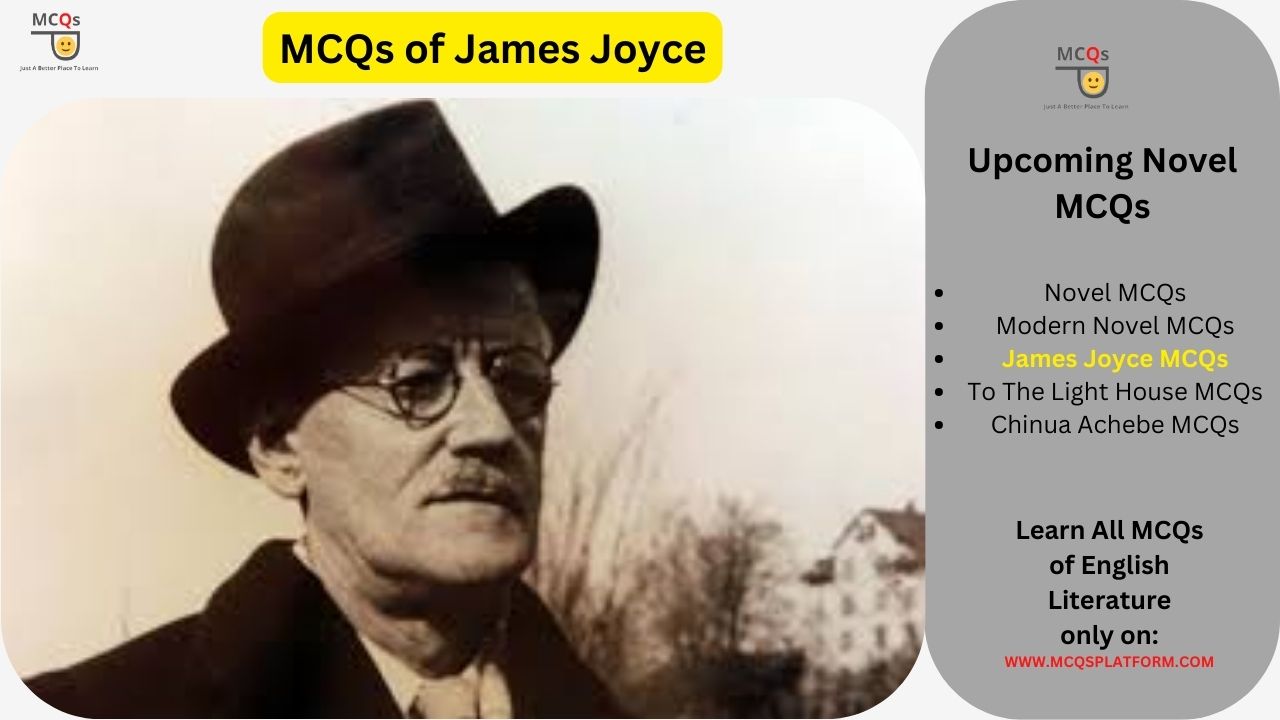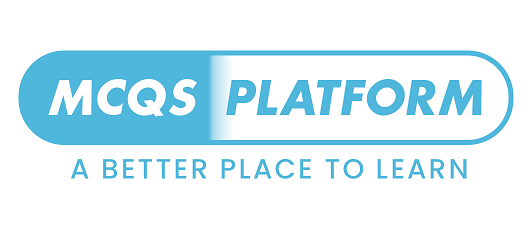
It is established that MCQs based on James Joyce’s studies represent one of the central parts of English Literature, which presents modernist fiction’s development over time. The following section evaluates the MCQs of James Joyce and its significant achievements through his pioneering stream-of-consciousness techniques, complex symbolism, and experimental storytelling methods. James Joyce established his reputation through Ulysses and A Portrait of the Artist as a Young Man and Dubliners, radically changing how literature represented human ideas and bodies of experience. Success in competitive exams or tests requires you to master these key MCQs of James Joyce completely.
All the important MCQs for English Literature are arranged across the English Literature section on the MCQs Platform. Once we upload all the MCQs, we will follow a quiz format for your practice because it helps you memorize these questions. Studying James Joyce and his literary work will make it easier for you to qualify for all English Literature Exams.
Important MCQs of James Joyce
Q. James Joyce was born in:
a) Nineteenth century Canada
b) Twentieth Century England
c) Nineteenth century America
d) Nineteenth century Ireland
Q. Joyce was an important pioneer of the narrative technique known as:
a) Dramatic monologue
b) Conditioned genesis
c) Stream of tension
d) Stream of consciousness
Q. The name “Dedalus” makes allusion to:
a) The mythological figure who solved the riddle of the sphinx
b) The mythological figure who flew too close to the sun and drowned in the ocean
c) The mythological figure who devoured his own daughter to prolong his life
d) The mythological figure who escaped from his island prison by constructing a pair of wings
Q. James Joyce was raised in a family that was deeply:
a) Atheistic
b) Protestant
c) Catholic
d) Buddhist
Q. In 1922, James Joyce published a book that some hail as the greatest masterpiece of twentieth century English literature. That book was:
a) Finnegan’s Wake
b) Ulysses
c) A Portrait of the Artist as a Young Man
d) Dubliners
Q. When describing the opening of this novel, one is most likely to talk about:
a) Catholic philosophy, naturalism, and terse sentences
b) Sensual imagery and stream of consciousness
c) Marxism and absurdism
d) Scholasticism, absurdism
Q. Stephen’s father is:
a) Both financially inept and a painter
b) A financial genius
c) Financially inept
d) A painter
Q. Stephen is the:
a) Only child
b) Youngest of roughly ten children
c) Oldest of roughly ten children
d) Only son in a family with eleven daughters
Q. As a young boy, Stephen attends:
a) The Jesuit school of Clongowes
b) Eaton
c) The public school of Dublin Boy’s Academy
d) The Jesuit school of St. Crustacio
Q. As a young boy, Stephen is:
a) Athletic and confident
b) Erudite and cocky
c) Insensitive and rambunctious
d) Unathletic and shy
You May Learn MCQs of Novel
